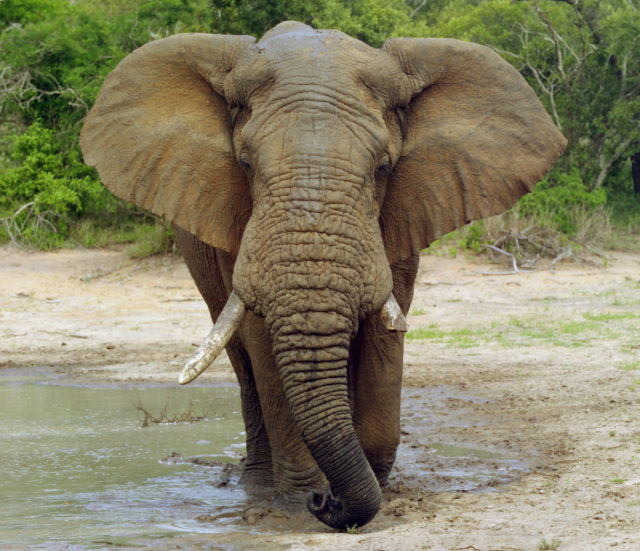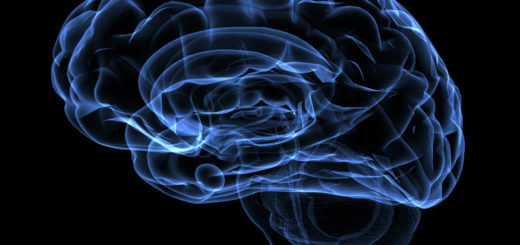Do animals mourn?

In 2013, a video1 taken in the Kenyan Samburu National Reserve showed a group of elephants inspecting the carcass of a dead matriarch – the female leader of a herd of elephants. The manner in which these creatures lingered around the body and touched the bones sparked a debate: are these creatures really grieving? This case has not been the only one. The increase in reports of mourning animals and the ever-growing fight for animal rights have led to an open discussion on this subject. If they truly are mourning, how could this change the way we view grief and animal emotions?

Image Credit: Godot13 via Wikimedia Commons (CC BY-SA 3.0)
One of the first documented examples of an animal appearing to mourn was in the late 19th century. Two chimpanzees in the Philadelphia Zoological Garden had lived together for many months and developed an intimate relationship; they never fought, often put their arms around one another, and defended each other. One morning, one of the chimps passed away. The naturalist Arthur E. Brown described how distressing it was to witness the other’s acts of anger and grief. It demonstrated rage-like behaviours involving tearing its hair and violently trying to rouse the other chimp. The yells eventually became a mourn-like cry which the keeper assured they had never heard before2. Another striking example comes from a detailed account by Jane Goodall (the world’s leading authority on chimpanzees who studied them for over 50 years) that describes how a young chimpanzee was unable to cope with the death of his mother in Tanzania’s Gombe Stream National Park. He grew lethargic, refused food, fell sick, and finally died a month later3.
On another note, some of the most impactful cases of grieving have been documented in cetaceans. In August 2018, images of a mother orca carrying her dead calf for two weeks went viral after scientists at the Center for Whale Research witnessed and documented the harrowing event off the shore of Vancouver Island4 5. Dr Joan Gonzalvo of the Ionian Dolphin Project (a group focused on Research and Conservation of Dolphins in the Ionian Sea, Greece) also described an occasion where an entire pod of dolphins struggled to keep a dying calf afloat and then remained in the area for a period of time after the body finally sank6 7.
Although these examples (and most media stories) feature large mammals, these are not the only creatures that have been reported to mourn. Man’s best-friend has long been a source of such stories, including Greyfriars Bobby and Hachiko as well as books which delve deeper into the psychology and science of grieving in dogs. Dr. Marc Berkoff, Professor of Evolutionary Biology at the University of Colorado Boulder and author of the book Canine Confidential: Why Dogs Do What They Do, stated that dogs don’t understand the concept of loss or death but do recognize that a companion is missing. In response, they show behavioural changes such as a lack of appetite, sleeping more than usual, or withdrawing from people and other pets – a collection of symptoms that sounds rather familiar. Even if dogs do not comprehend the metaphysical implications of the death, their change in behaviour implies at least a minimal understanding of loss.

All of these examples describe behaviour that can be interpreted as grieving or mourning; but what are the definitions of these terms? The Cambridge Dictionary defines both grieving and mourning as “to feel or express great sadness, especially because of someone’s death”. Furthermore , Barbara J. King, an emeritus professor of anthropology and author of How Animals Grieve (a book I highly recommend for those interested in this subject), defines grief and mourning as “significant deviations from usual routines displayed by survivors after the death of a significant companion animal”. In her terms, there is no distinction between grieving and mourning as both result in a change of behaviour. However, it is known that grieving and feeling grief are intricately related. Therefore, if we assert that animals can mourn, can it be stated that grieving animals actually feel grief? Since the empirical definition of mourning limits itself to objective observations but the act of feeling grief is impossible to measure. On a more scientific basis, a study in baboons observed a large increase in the concentration of stress hormones in their blood after losing a close companion or child. This proves that baboons feel stress as a result of these losses8.
It is difficult to ascertain whether it is grief or curiosity that drives an elephant to touch a dead body or if a dog that “grieves” its companion does so out of a sense of loss or because he simply misses the act of playing with his companion. Presently, there are few studies that focus on the feeling of grief in animals due to the challenge of studying animal emotions. Several problems arise when investigating this topic: the inability of animals to communicate their feelings, the possibility of anthropomorphizing (attributing human characteristics to animals) their behaviour, and the variety of mourning behaviour found across the animal kingdom. Among other reasons, a fear of anthropomorphizing has led scientists to be reluctant to describe the behaviour of any animal towards one of their dead as “grieving”. Perhaps this is because we fear we are projecting highly complex human emotions onto animals or perhaps because animals don’t comprehend the loss of a companion. Nonetheless, the increasing number of observations and anecdotal reports prompt the scientific (and non-scientific) community to begin to reconsider grieving as an exclusively human experience. Although humans experience grief in a more visible way (according to ourselves), it might be that animals also experience grief, but in a simpler form. As Barbara King suggests, perhaps the only thing that differentiates human and animal grief is “[Homo Sapiens] unique ability to fully anticipate the inevitability of death (…) and to express our losses in a thousand glorious or ragged ways”.
This article was specialist edited by Niamh Armstrong and copy edited by Vaiva Gikaite.
References
- As seen here: https://www.nationalgeographic.com/news/2016/08/elephants-mourning-video-animal-grief/
- Here is the link to the original article which is short but thought-provoking: https://www.google.com/url?sa=t&rct=j&q=&esrc=s&source=web&cd=1&ved=2ahUKEwiW-c-TyMnmAhUqyYUKHauZBwwQFjAAegQIAhAB&url=https%3A%2F%2Fwww.journals.uchicago.edu%2Fdoi%2Fpdfplus%2F10.1086%2F272298&usg=AOvVaw2BT2RRK7j1M62M7Zpz2RPJ
- https://www.bbcearth.com/blog/?article=the-truth-about-animal-grief
- More information about this event can be found on this page: https://www.nationalgeographic.com/animals/2018/08/orca-mourning-calf-killer-whale-northwest-news/.
- Further images of the female killer whale (also called J35) carrying her dead calf can be found on this webpage from the Center for Whale Research: https://www.whaleresearch.com/j35
- As described in this article: https://www.sciencemag.org/news/2018/06/do-dolphins-feel-grief
- This example is mentioned here: https://www.bbcearth.com/blog/?article=the-truth-about-animal-grief
- This article details the study that measured glucocorticoid (stress hormone) levels in baboons: https://www.sciencedaily.com/releases/2006/01/060130154735.htm










